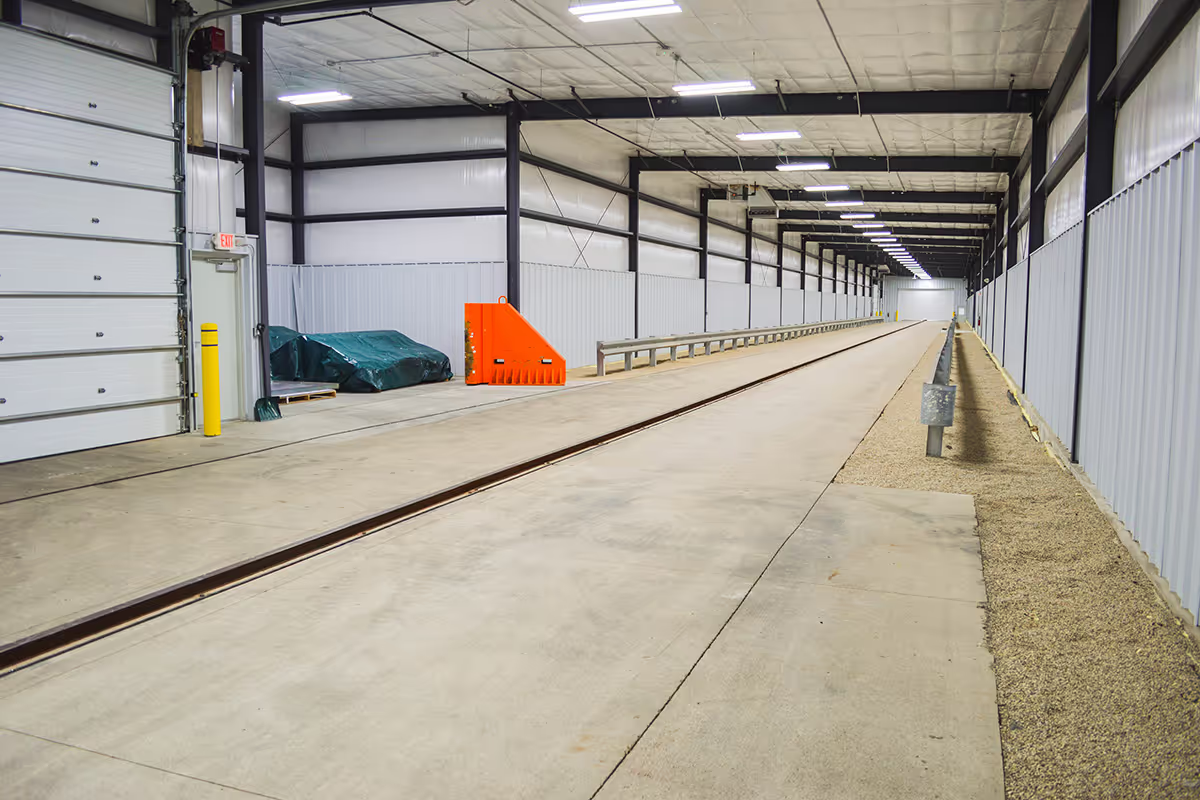
Vehicle Crash Testing
MGA Research Corporation offers comprehensive vehicle crash testing services, leveraging over 35 years of experience to support automotive safety development engineers from early prototypes through final regulatory compliance and consumer ratings.
Quick Overview

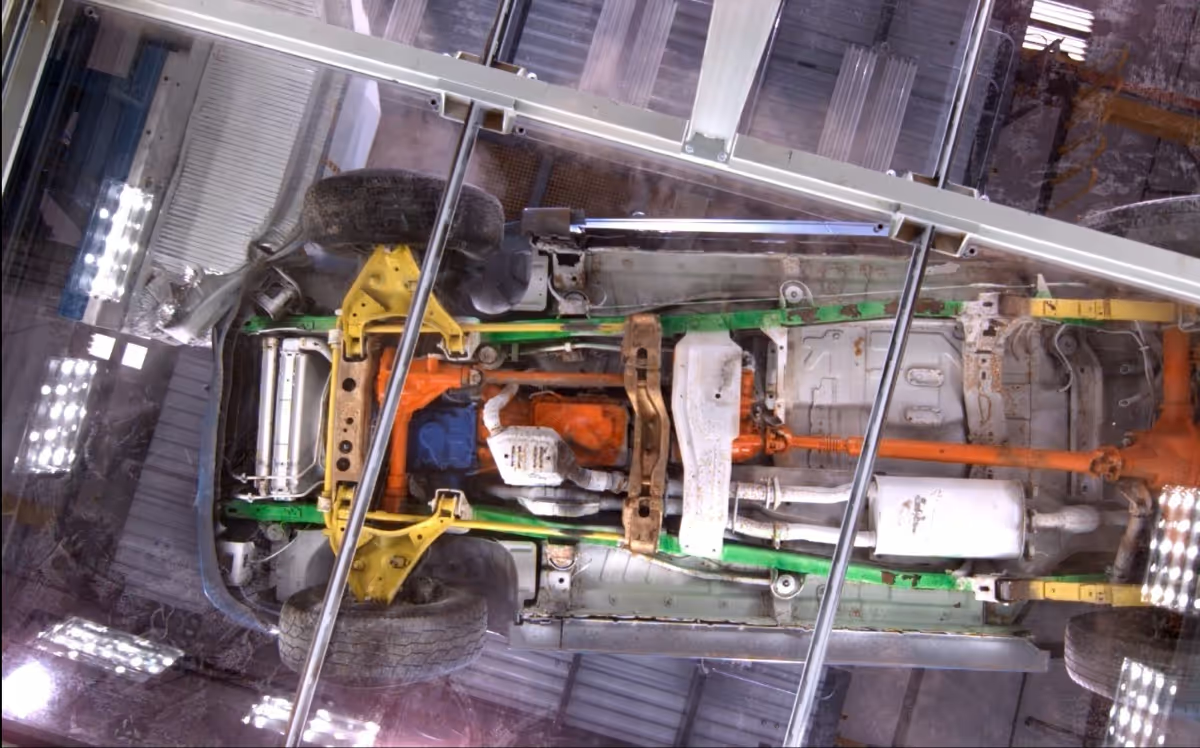
Comprehensive Development Test Support
MGA offers a complete range of vehicle crash tests to support vehicle development from early phase structural validations through consumer ratings.
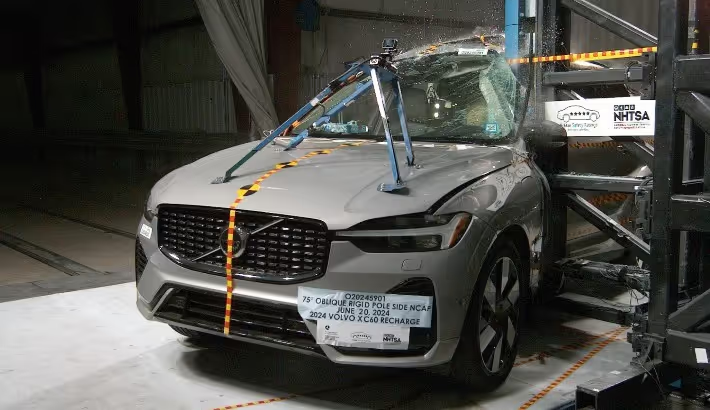
FMVSS Testing
We conduct all FMVSS crash test modes for U.S. safety compliance.

UN / ECE Type Approval
Experienced in meeting EU export requirements with multiple witness agencies

Consumer Testing: NCAP & IIHS
MGA is experienced in Global NCAP and IIHS test protocols, including the latest frontal and side impacts.
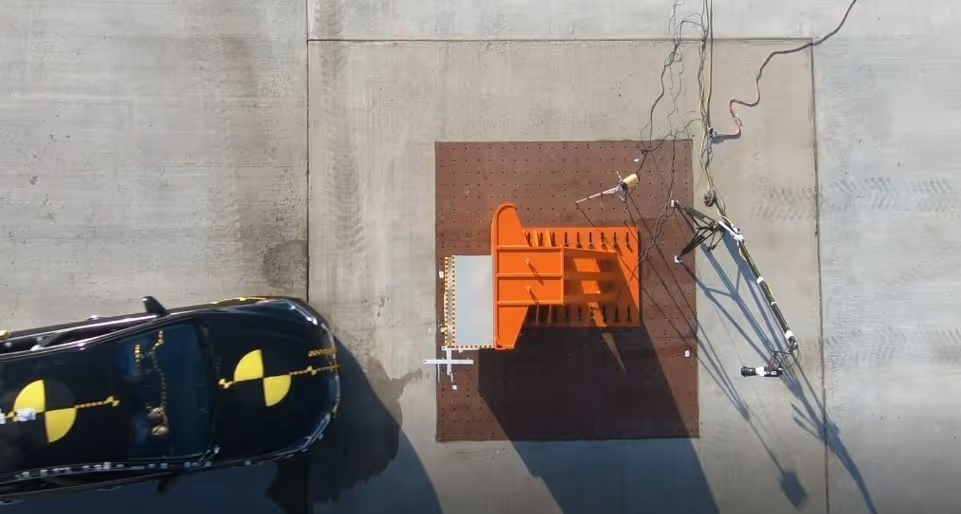
Custom Test Modes & Crash Research
We leverage our in-house equipment and fabrication experience to create unique crash test setups for specialized research projects, including car-to-car and other real-world crash scenarios.
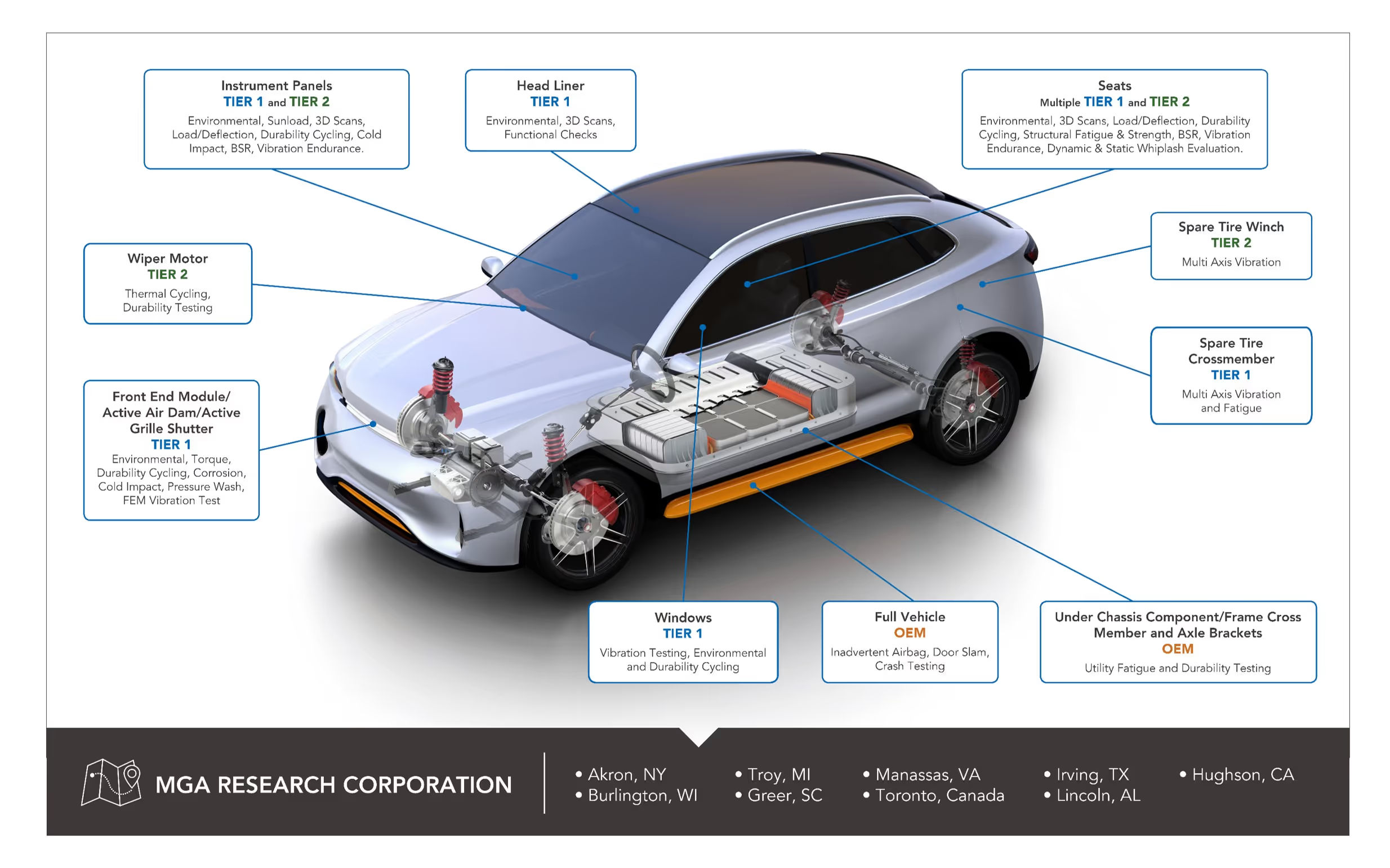
Electric & Alternative Fuel Vehicles
We have extensive experience testing electric (EV), Hybrid (HEV), and fuel cell vehicles, adapting to the ever-evolving automotive market.
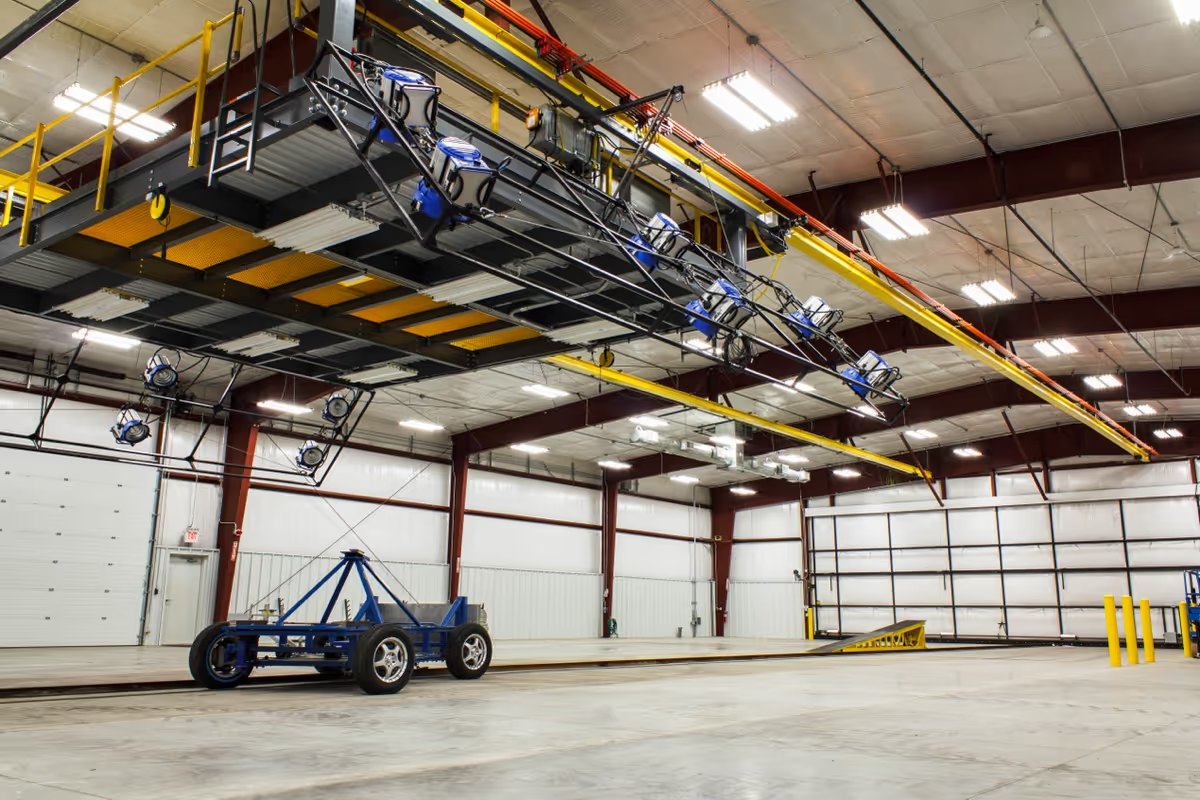
Multiple Test Facilities
MGA operates two distinct crash test facilities in the USA with six total crash lanes, offering our customers unmatched test capacity and flexibility.
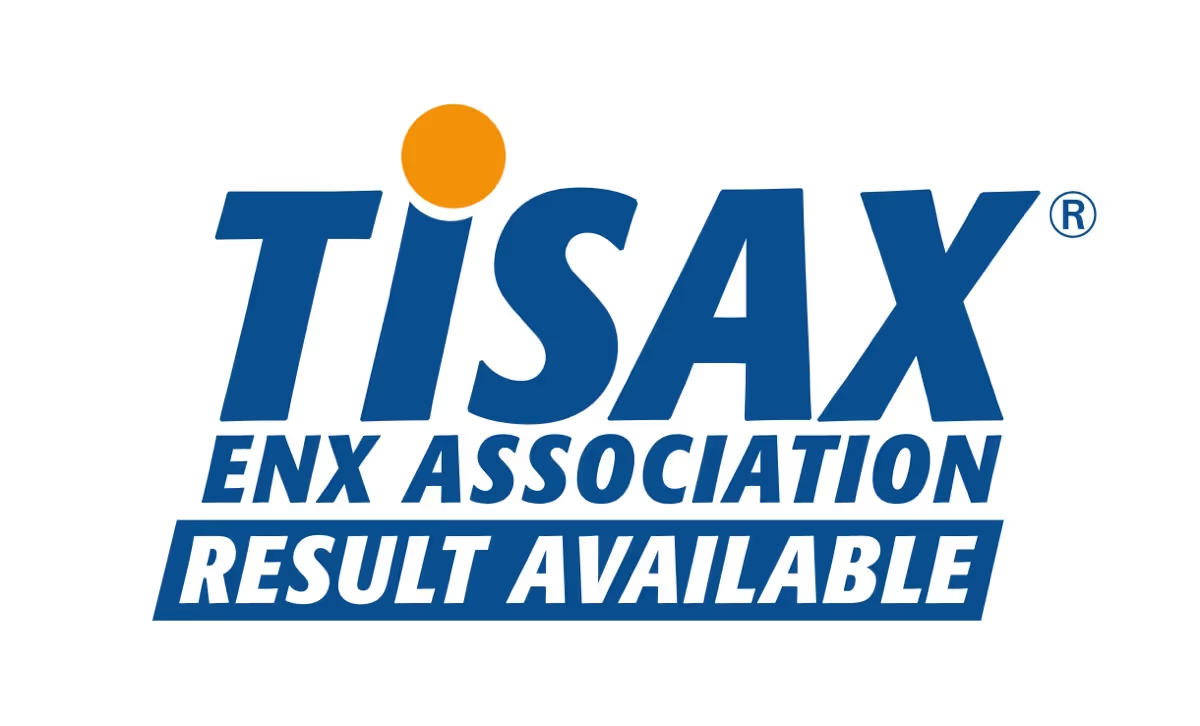
Quality and Security
Our test facilities are ISO 17025 accredited, and MGA Research Corporation is a TISAX participant
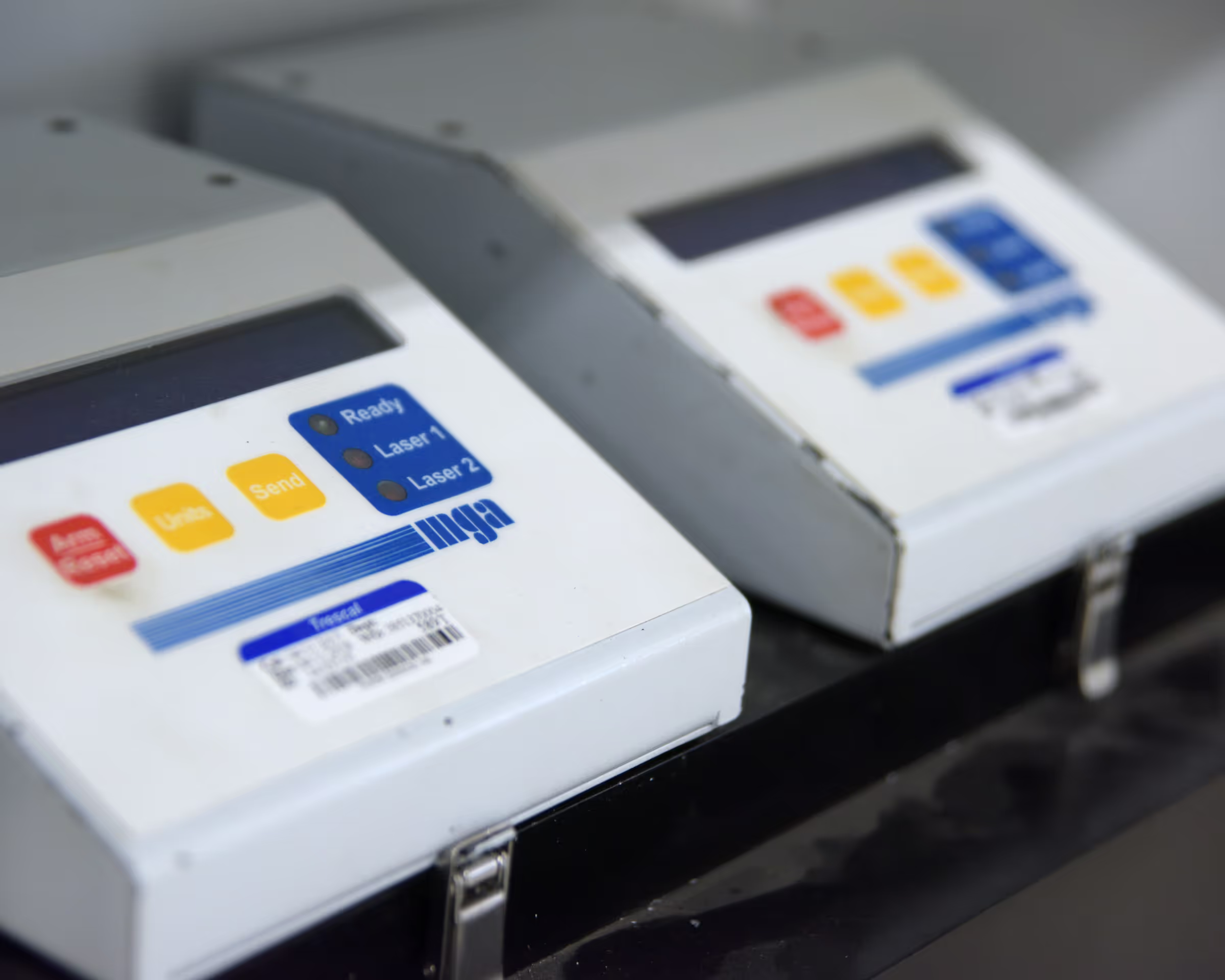
End-to-End Project Support
We work alongside our clients throughout the development process, from early prototypes to final release testing. We even support our international customers through the vehicle import process.
At MGA Research, our industry-leading crash testing services support global automotive manufacturers in developing safer vehicles. With more than 40 years of experience, ISO 17025-accredited facilities, and a broad portfolio of regulatory and consumer testing protocols including FMVSS, NCAP, and IIHS, we deliver precise, repeatable, and data-driven results. Whether you are validating early prototypes or certifying production-ready vehicles, MGA is your trusted partner for comprehensive vehicle safety testing.
What is Automotive Crash Testing?
Crash testing is a scientific process that simulates real-world vehicle collisions under controlled conditions. The goal is to evaluate how a vehicle protects its occupants during various types of crashes. This testing is critical in supporting vehicle safety development, achieving regulatory compliance, and obtaining strong safety ratings from programs like NHTSA, IIHS, and Euro NCAP.
Crash testing data helps engineers understand vehicle performance during impacts, guiding improvements that enhance occupant protection and minimize injury risk.
Why Crash Testing Matters
- Protects Occupants: Confirms the effectiveness of safety systems like airbags and seat belts in real-world crash simulations.
- Drives Vehicle Innovation: Supports improvements to vehicle structure, energy management systems, and restraint integration.
- Meets Regulatory Requirements: Ensures vehicles comply with government safety standards and pass critical certification tests.
- Supports Safety Ratings: Enables strong performance in consumer-facing evaluations that influence buyer decisions.
Types of Automotive Crash Tests We Perform
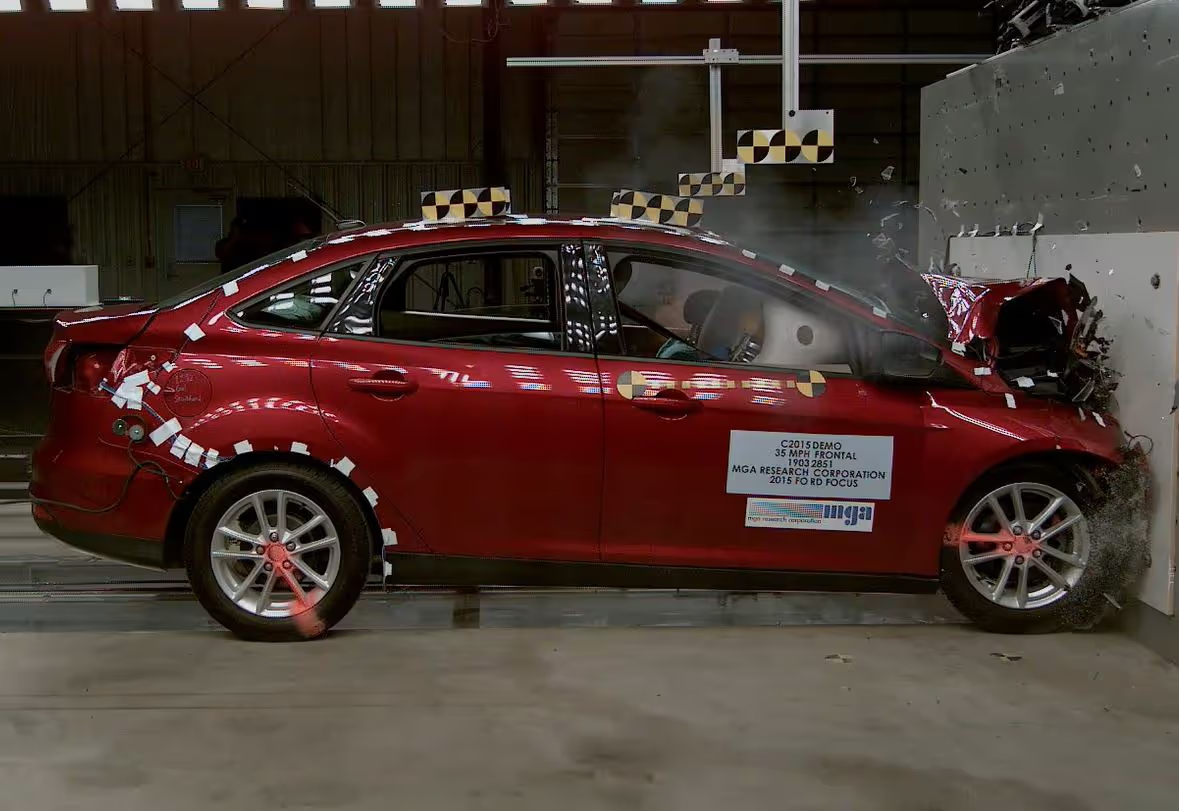
Frontal Impact Tests
- Full-Width Frontal Crash: Simulates a head-on impact to measure airbag performance, seat belt function, and injury potential.
- Moderate Overlap Front Crash: Involves a 40 percent offset against a deformable barrier to assess structural response and occupant safety.
- Small Overlap Front Crash: Follows IIHS's 25 percent overlap protocol to simulate collisions with poles or other narrow objects.
Frontal Crash Modes
- FMVSS 208, 25mph ODB 40%
- FMVSS 208, 20/25 mph wall 0°
- FMVSS 208, 20/25 mph wall 30° left and right
- FMVSS 208/301, 35 mph wall 0°
- FMVSS 301, 30 mph wall 30° left and right
- US-NCAP, 35 mph wall 0°
- IIHS, 40 mph Small Overlap 25% left and right
- IIHS, 40 mph 40% ODB 2.0 left
- Latin NCAP, 64 km/h 40% ODB
- 27 km/h wall 0° (sensor system)
- 30 km/h underride Type 1 (sensor system)
- 32 km/h 30° left and right (sensor system)
- 35 km/h pole center (sensor system)
Front RCAR
- Structure: 15 km/h +1 km/h (10° barrier)
- Bumper: 10 km/h ±0.5 km/h (height 455 mm)
Side Impact Tests
- Moving Deformable Barrier (MDB): Represents a T-bone crash to test side airbag deployment and passenger protection.
- Pole Side Impact: Involves hitting a narrow object like a utility pole to examine head protection and cabin integrity.
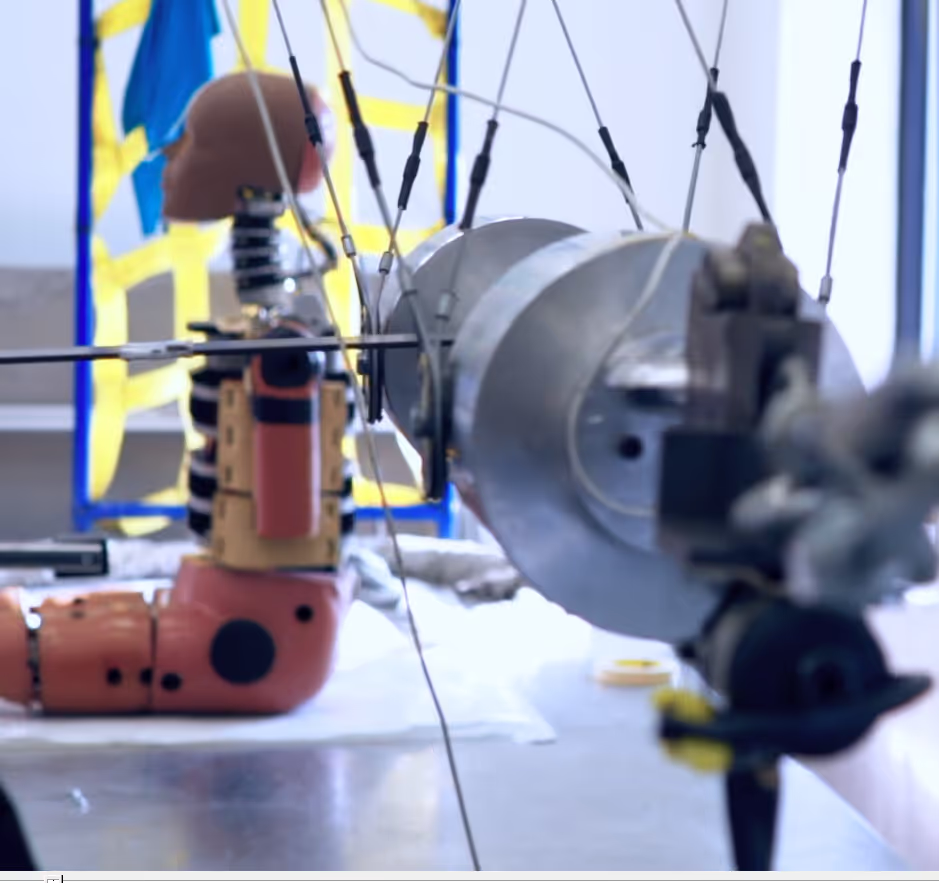
Side Impact Test Modes
- FMVSS214, 54 km/h MDB
- FMVSS214, 32 km/h pole front
- US-NCAP, 62 km/h MDB
- US-NCAP, 32 km/h pole front
- IIHS 50 km/h MDB (2016)
- IIHS 60 km/h MDB (2022)
- Latin NCAP, 50 km/h MDB
- Latin NCAP, 29 km/h pole
- UN-R95, 50 km/h MDB
- UN-R135, 32 km/h pole
- UN-R95, 30 km/h MDB (sensor system)
Rear Impact Tests
- High-Speed Rear Collision: Focuses on fuel system integrity, rear occupant protection, and whiplash mitigation strategies.
Rear Impact Test Modes
- FMVSS 301/305, 50 mph ODB 70% rear end, left and right 1361 kg
- UN-R 34, 53 km/h 100% 1100 kg
Rear End
- Structure: 15 km/h +1 km/h (trolley against rear end)
- Bumper: 10 km/h ±0.5 km/h (height 405 mm)
Rollover Tests
- Dynamic Rollover Testing: Evaluates vehicle stability and the ability to protect occupants during rolling motion.
- Static Roof Crush: Applies pressure to the roof structure to test resistance to collapse and occupant survival space.
Rollover (sensor system)
- Corkscrew ramp
- Curb trip
Other Supported Test Modes
Bumper system on trolley
- Front + Rear end: 10-15 km/h (trolley against wall)
Safety Standards and Regulatory Compliance
MGA provides crash testing aligned with major global safety programs:
- FMVSS (Federal Motor Vehicle Safety Standards): U.S. government-mandated tests required for vehicle certification.
- NCAP (New Car Assessment Program): Tests designed to inform consumers and assign safety ratings based on crash performance.
- IIHS (Insurance Institute for Highway Safety): Independent evaluations focused on advanced crash scenarios and safety system effectiveness.
- International Standards: Includes Euro NCAP, Latin NCAP, and other region-specific protocols for export compliance and homologation.
Crash Testing Technology and Instrumentation
Crash Test Dummies (ATDs)
We utilize a wide variety of anthropomorphic test devices to simulate occupants of different sizes and positions, including drivers, passengers, and rear-seat occupants.
Sensor and Data Systems
State-of-the-art sensors collect force, acceleration, and injury metrics during every test. High-speed cameras capture detailed footage for thorough post-crash analysis.
Test Barriers and Equipment
We use deformable and rigid barriers, mobile crash walls, and specialized equipment for pole and narrow-object impacts to create realistic, consistent crash conditions.
MGA builds the majority of our own crash equipment, so we have an unmatched understanding of equipment limits and capabilities. Our experienced team members along with our design and fabrication teams in New York allow us to build just about any situation that can be dreamed up.
Vehicle Safety Systems Evaluated
Passive Safety Features
- Airbags: Frontal, side curtain, and advanced deployment systems are validated in various crash modes.
- Seat Belts: Assessed for pre-tensioning, load limiting, and compatibility with child restraint systems.
Active Safety and Driver Assistance
- Crash Prevention Technologies: Includes systems like automatic emergency braking, blind spot monitoring, and lane departure warning.
- Advanced Driver Assistance Systems (ADAS): Features such as adaptive cruise control, pedestrian detection, and collision warnings are evaluated in pre-crash testing programs.
MGA’s Crash Test Capabilities
Testing Services
- Development Testing: Early-stage evaluations to support design improvement, CAE model correlation, and prototype refinement.
- Regulatory Testing: Comprehensive support for FMVSS certification and global homologation requirements.
- Consumer Ratings Compliance: Execution of protocols defined by NCAP and IIHS for competitive market benchmarking.
- Custom Scenarios: Tailored tests for unique crash situations, such as multi-vehicle impacts and high-speed collisions.
- Electric Vehicle and Alternative Powertrain Testing: MGA is equipped to conduct crash tests for electric and hybrid vehicles, including assessments of battery integrity and high-voltage system safety.
Our Testing Facilities
- Six Dedicated Crash Test Lanes
- Indoor and Outdoor Testing Options
- Locations in Wisconsin and Alabama
- ISO 17025 Accredited for Quality Assurance
Wisconsin and Alabama Crash Testing Facilities
The Wisconsin operations, established in 1988, is a 400-acre proving grounds with a Vehicle Safety Center consisting of three indoor crash lanes (two frontal barrier sites), two accelerator sleds, as well as a 4th outdoor crash lane for multi-car and high-risk impacts.
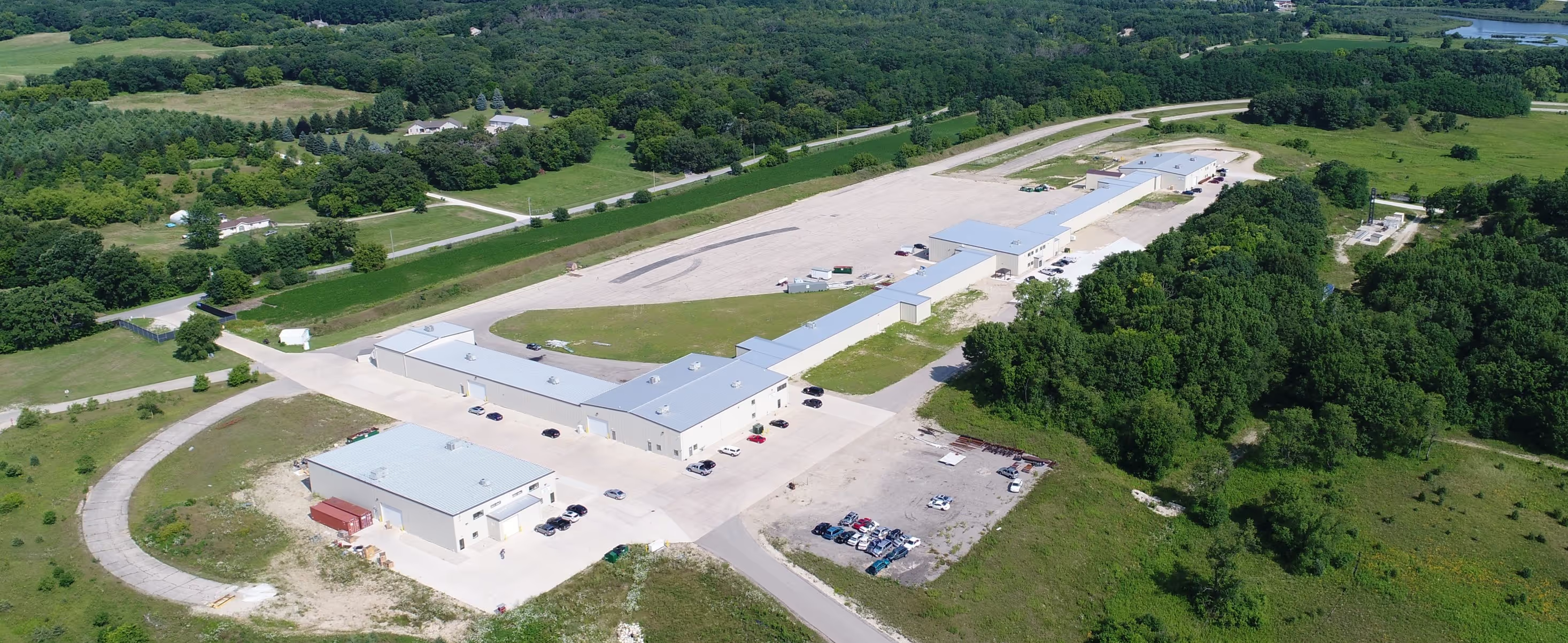
The Alabama test facility was established more recently in 2014, with two separate crash halls connected by a single track. This facility has over 75,000 square feet of testing area and room to expand in order to support our global customer base in the area and is strategically located in the middle of automotive manufacturing activities in the Southeastern United States. The facility has a modular design, allowing the crash facility to be completely isolated from the component safety and durability lab. It is the first facility of its kind in the southeast to combine component level durability, safety, and full vehicle crash testing in one location.
.avif)
The Crash Testing Process
- Preparation: Vehicles are instrumented with sensors, and crash dummies are positioned according to test protocol.
- Setup: Speed, angle, and environmental conditions are configured. High-speed video and data acquisition systems are calibrated.
- Test Execution: Vehicles are propelled under precisely controlled conditions to achieve the required impact scenario.
- Data Collection: Real-time measurements and high-speed video footage are recorded for analysis.
- Post-Test Review: Engineers analyze results, calculate injury metrics, evaluate safety system performance, and compile comprehensive reports.
Looking Ahead
MGA remains at the forefront of crash testing innovation. We are actively engaged in evaluating the impact of:
- Autonomous Vehicle Technologies
- Next-Generation Materials and Lightweight Structures
- Virtual and Hybrid Testing Methodologies
- Evolving Global Safety Regulations
Contact Us
If your team is planning a crash test program, preparing for vehicle certification, or seeking expert guidance on crashworthiness evaluation, MGA Research can help. Contact us to speak with one of our experts or schedule a test today.
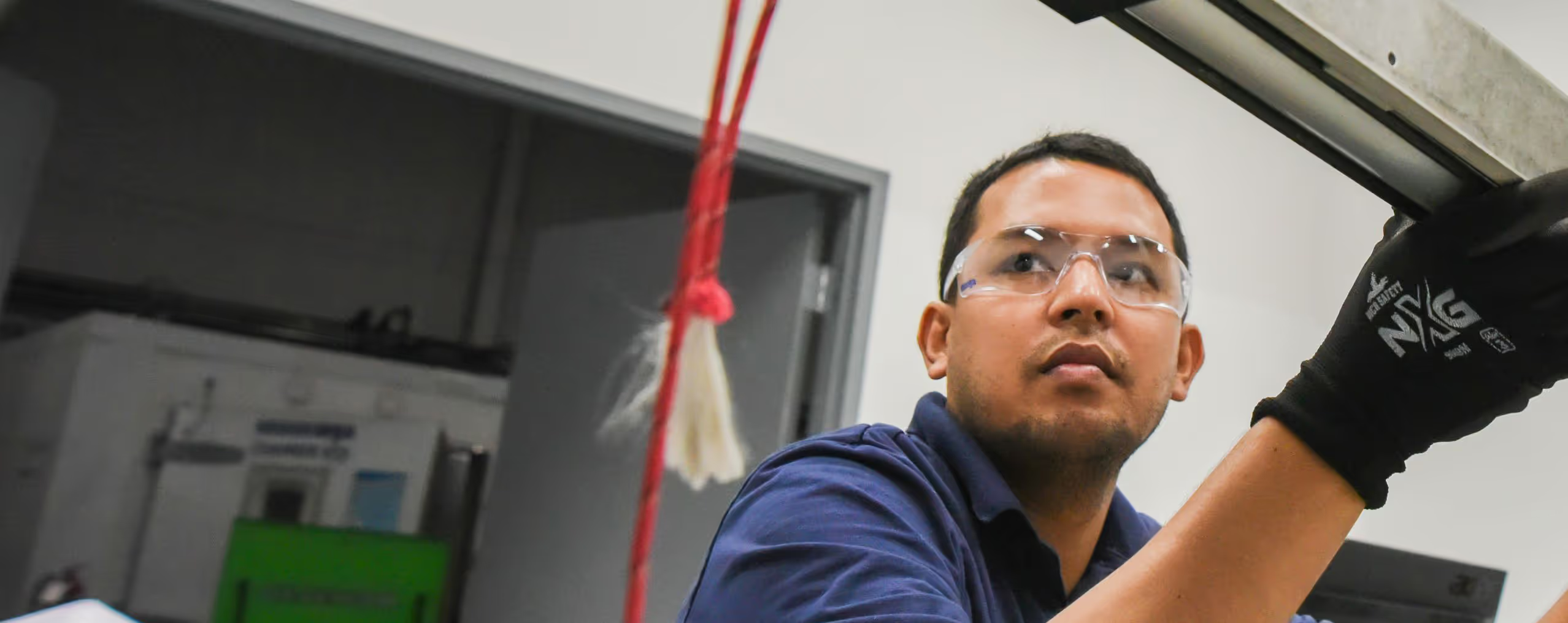
Ready to Get Started?
Let's discuss your testing needs and how MGA can help. Our team is ready to provide the expertise and solutions you're looking for.
